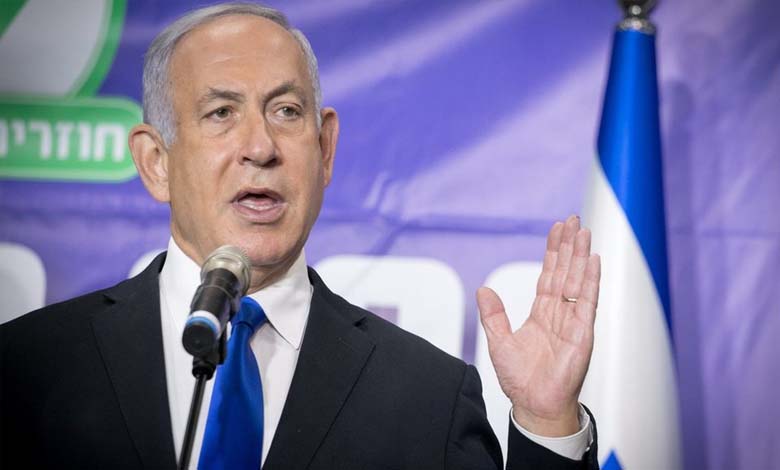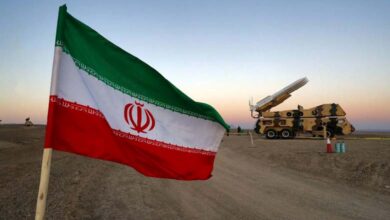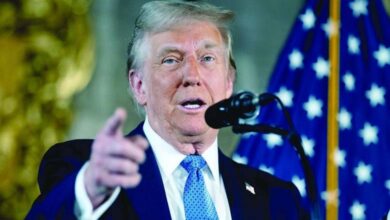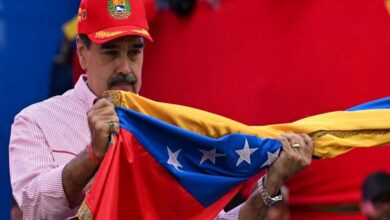Is Israel repeating the scenario of its 1967 government?

Israel appears to be repeating the scenario of its 1967 government when its parties united under emergency governments known as the National Unity Government.
In Israel, both the government and opposition parties are putting aside their differences that have persisted since the beginning of this year in order to jointly wage the war.
The current war being waged by Israel against Hamas differs from the military operations it has conducted in recent years, as it did not declare a state of war, as it did on Sunday, when it announced a “state of war” legally.
On Sunday, Israeli Prime Minister Benjamin Netanyahu proposed to opposition leader Yair Lapid and the leader of the “National Unity” party and former Defense Minister Benny Gantz to join an emergency government. While Lapid insisted on excluding extreme right-wing parties like “Religious Zionism” led by Finance Minister Bezalel Smotrich and “Jewish Power” led by Minister of National Security Itamar Ben Gvir, Gantz did not impose any conditions.
Israeli Prime Minister Benjamin Netanyahu said in an address to the Israeli people on Monday, “The people are united, and now it is up to the leadership to unite.”
He continued: “I call on the leaders of the opposition to form a national emergency government immediately and without any preconditions, just as it was formed with Menachem Begin on the eve of the Six-Day War in 1967.”
Israeli opposition leaders did not rush to respond to Netanyahu’s public call.
However, Israeli media indicated progress in the private talks between Netanyahu and Gantz for the latter to join the government.
Israeli analysts point out that the Likud party, led by Netanyahu, and the Jewish Power party, along with the Religious Zionism party, are not enthusiastic about Lapid joining the government, especially because of his positions on the religious parties that have joined it.
Netanyahu had promised a “long battle” against Hamas in Gaza, which would require the formation of a government.
Israel considers what happened on Saturday to be the most difficult for it since its establishment in 1948, and even Israeli President Isaac Herzog went further than this date.
Herzog said in a message to the international community on Monday, “According to my memory, since the Holocaust, this large number of Jews has not been killed in one day.”
The Israeli Broadcasting Authority said on Monday evening, “The death toll from Hamas’ surprise attack has risen to at least 900, with more than 2,600 wounded.”
What Happened in 1967? On June 1, 1967, then-Israeli Prime Minister Levi Eshkol combined the “Rafi” and “Gahal” blocs into a coalition government and formed a national unity government.
As a result, Moshe Dayan (from the Rafi party) joined the government and served as its defense minister at the time, while Menachem Begin and Yosef Sapir (from the Gahal party) joined as ministers without portfolio.
The goal of appointing Dayan as defense minister on the eve of the 1967 war was to allay public fears following the war, but this was not the only national unity government in Israel, although it was the most prominent.
Unity Governments:
- The fourteenth government (March to December 1969) led by Golda Meir, who also served during the sixth Knesset’s term. Golda Meir formed the government after the death of Prime Minister Levi Eshkol. This was also a broad-based government, with a composition similar to the one that preceded it.
- The fifteenth government (1969–1974) led by Golda Meir during the seventh Knesset’s term. Menachem Begin joined the government as the head of the Gahal party. During this period, the War of Attrition on the Egyptian front broke out, and after its end, Gahal ministers withdrew from the government.
- The twenty-first and twenty-second governments (1984–1986 and 1986–1988) during the eleventh Knesset’s term. The twenty-first government was led by Shimon Peres, while the twenty-second government was led by Yitzhak Shamir. The two sides agreed on this rotation after the Knesset elections resulted in a tie between the right-wing and left-wing party blocs.
During both governments, Yitzhak Rabin served as the defense minister, and Yitzhak Moda’i (Likud) served as the finance minister. The distribution of roles in the two governments and their overall outlines were similar.












